by Adam Hefty
November 13, 2012
The chart below is the culmination of a procrastinatory project that originally started out with a couple of simple, contemporary questions. How did Jill Stein, Roseanne Barr, and Rocky Anderson do, in comparison to each other and in comparison to recent history? The contemporary period for left-of-center third-party presidential races starts with Ralph Nader in 2000. But then I wondered how 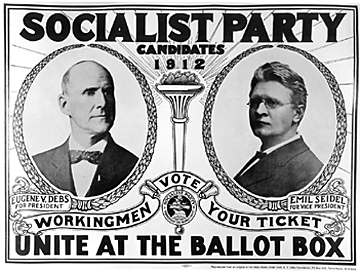 the weaker numbers from 2004, 2008, and 2012 compared to previous years. After all, in recent years, Nader’s 2000 campaign was kind of an outlier in its relative impact. What were its precedents? Eugene McCarthy’s several campaigns? The foundation of the Peace and Freedom Party in 1968? Henry Wallace’s 1948 campaign? Going back even further, Norman Thomas, Eugene Debs, or “Fighting Bob” La Follette? And what if anything was the historic pattern in between these high water marks?
the weaker numbers from 2004, 2008, and 2012 compared to previous years. After all, in recent years, Nader’s 2000 campaign was kind of an outlier in its relative impact. What were its precedents? Eugene McCarthy’s several campaigns? The foundation of the Peace and Freedom Party in 1968? Henry Wallace’s 1948 campaign? Going back even further, Norman Thomas, Eugene Debs, or “Fighting Bob” La Follette? And what if anything was the historic pattern in between these high water marks?
 I decided to chart of left-of-center third-party presidential campaigns covering most of US history, to the extent that that was even a coherent category. (It turned out to be incoherent before 1840 or arguably 1876, as I’ll explain.)
I decided to chart of left-of-center third-party presidential campaigns covering most of US history, to the extent that that was even a coherent category. (It turned out to be incoherent before 1840 or arguably 1876, as I’ll explain.)
This chart and this post may not directly engage the debate, heightened over the past few months as it is every four years, about how to vote or whether to build a third party. It is intended more as a node of reflection for those of us who are already somewhat engaged in or committed to building an independent, left third party (or “independent political action,” as it is sometimes called amongst socialists).
| Left-of-center presidential candidates’ combined vote: | ||
|
Figures taken from US Election Atlas |
||
| 2012 | Stein (Green), Barr (Peace and Freedom), Anderson (Justice), Lindsey (Socialism and Liberation) | 0.43% |
| 2008 | Nader (independent), McKinney (Green), Calero (Socialist Workers), LaRiva (Socialism and Liberation), Moore (Socialist) | 0.71% |
| 2004 | Nader (independent), Cobb (Green), Peltier (Peace and Freedom), Brown (Socialist), Calero (Socialist Workers) | 0.52% |
| 2000 | Nader (Green), Harris (Socialist Workers), McReynolds (Socialist) | 2.75% |
| 1996 | Nader (Green), Moorehead (Workers World), Feinland (Peace and Freedom), Harris (Socialist Workers), Peron (Grassroots) | 0.79% |
| 1992 | Fulani (New Alliance), Daniels (Peace and Freedom), Warren (Socialist Workers) | 0.12% |
| 1988 | Fulani (New Alliance), McCarthy (Consumer), Winn (Workers League), Warren (Socialist Workers), Lewin (Peace and Freedom), Holmes (Workers World) | 0.33% |
| 1984 | Johnson (Citizens), Serrette (Alliance), Hall (Communist), Mason (Socialist Workers), Holmes (Workers World), Winn (Workers League) | 0.23% |
| 1980 | Commoner (Citizens), Hall (Communist), DeBarry (Socialist Workers), Smith (Peace and Freedom), Griswold (Workers World), McReynolds (Socialist), Pulley (Socialist Workers) | 0.42% |
| 1976 | McCarthy (independent), Camejo (Socialist Workers), Hall (Communist), Wright (People’s), Levin (Socialist Labor), Zeidler (Socialist) | 1.17% |
| 1972 | Jenness (Socialist Workers), Spock (People’s), Fisher (Socialist Labor), Hall (Communist), Reed (Socialist Workers) | 0.33% |
| 1968 | Blomen (Socialist Labor), Gregory (Peace and Freedom), Halstead (Socialist Workers), Cleaver (Peace and Freedom), McCarthy (New Party/write-in) | 0.28% |
| 1964 | Hass (Socialist Labor), DeBarry (Socialist Workers) | 0.11% |
| 1960 | Hass (Socialist Labor), Dobbs (Socialist Workers) | 0.13% |
| 1956 | Hass (Socialist Labor), Dobbs (Socialist Workers) | 0.08% |
| 1952 | Hallinan (Progressive), Hass (Socialist Labor), Hoopes (Socialist), Dobbs (Socialist Workers), Krajewski (Poor Man’s) | 0.34% |
| 1948 | Wallace (Progressive), Thomas (Socialist), Teichert (Socialist Labor), Dobbs (Socialist Workers) | 2.75% |
| 1944 | Thomas (Socialist), Teichert (Socialist Labor) | 0.17% |
| 1940 | Thomas (Socialist), Browder (Communist), Aiken (Socialist Labor) | 0.36% |
| 1936 | Lemke (Union), Thomas (Socialist), Browder (Communist), Aiken (Socialist Labor) | 2.56% |
| 1932 | Thomas (Socialist), Foster (Communist), Harvey (Liberty), Reynolds (Socialist Labor), Coxey (Farmer-Labor) | 2.73% |
| 1928 | Thomas (Socialist), Foster (Communist), Reynolds (Socialist Labor), Webb (Farmer-Labor) | 0.94% |
| 1924 | LaFollette (Progressive), Foster (Communist), Johns (Socialist Labor), Wallace (Commonwealth Land) | 16.85% |
| 1920 | Debs (Socialist), Christiansen (Farmer-Labor), Cox (Socialist Labor), Macauley (Single Tax) | 4.54% |
| 1916 | Benson (Socialist), Reimer (Socialist Labor) | 3.27% |
| 1912 | Debs (Socialist), Reimer (Socialist Labor) | 6.18% |
| 1908 | Debs (Socialist), Gillhaus (Socialist Labor) | 2.92% |
| 1904 | Debs (Socialist), Corregan (Socialist Labor) | 3.23% |
| 1900 | Debs (Socialist), Barker (Populist), Maloney (Socialist Labor), Ellis (United Reform) | 1.32% |
| 1896 | Matchett (Socialist Labor). Note: Populists nominate Democrat W. J. Bryan this year. | 0.26% |
| 1892 | Weaver (Populist), Wing (Socialist Labor) | 8.69% |
| 1888 | Streeter (Union Labor), Cowdrey (United Labor), Socialist Labor Party electors unpledged to a candidate | 1.34% |
| 1884 | Butler (Greenback) | 1.33% |
| 1880 | Weaver (Greenback) | 3.32% |
| 1876 | Cooper (Greenback) | 0.99% |
| 1856-1872 | No left-of-center candidacies got ballot access and obtained more than 0.01% of the vote. | |
| 1852 | Hale (Free Soil) | 4.93% |
| 1848 | Van Buren (Free Soil), Smith (National Liberty) | 10.22% |
| 1844 | Birney (Liberty) | 2.30% |
| 1840 | Birney (Liberty) | 0.31% |
| 1789-1836 | No left-of-center candidacies got ballot access and obtained more than 0.01% of the vote. |
Methodology of this chart
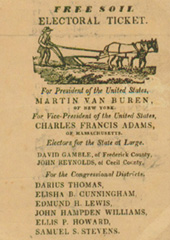 Deciding who to include and exclude from this chart involved judgment calls. I tried to include all candidates who were generally left of center, that is, left of the bourgeois consensus or left of the two major parties in a given era. I included everyone from left-liberals and populists to candidates of small left organizations who may be considered sectarian (or even cultish in a couple of cases) by some of my readers. I only included those candidates / parties that received at least 0.01% of the vote.
Deciding who to include and exclude from this chart involved judgment calls. I tried to include all candidates who were generally left of center, that is, left of the bourgeois consensus or left of the two major parties in a given era. I included everyone from left-liberals and populists to candidates of small left organizations who may be considered sectarian (or even cultish in a couple of cases) by some of my readers. I only included those candidates / parties that received at least 0.01% of the vote.
For the purposes of this chart, I don’t care how healthy these parties were, just that their candidates were espousing left-of-center views semi-consistently. I did not include Lyndon LaRouche, whose origins are on the left but whose ideology by the time of his presidential runs was not clearly left-of-center. (I’d consider LaRouche’s ideology to be corporatist, capitalist, and tending towards a paranoid form of Bonapartism or Caudillismo, perhaps with some qualities that hearken back to Huey Long or Father Coughlin within US political history. Others consider him to be semi-fascist, due to apparent anti-semitism and attacks on the left.)
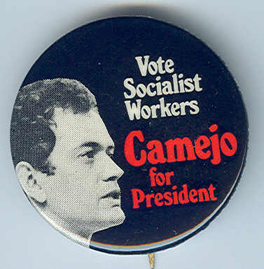 Speaking of Long and Coughlin, I did include the 1936 Union Party, after some hesitation, since it at least posited itself as a populist wing of the New Deal. And I included a couple of candidates who received small numbers of votes based on a platform articulating some kind of slightly left-of-center-leaning reform, like the 1932 Liberty Party or the Single Tax / Commonwealth Party of 1920 and 1924.
Speaking of Long and Coughlin, I did include the 1936 Union Party, after some hesitation, since it at least posited itself as a populist wing of the New Deal. And I included a couple of candidates who received small numbers of votes based on a platform articulating some kind of slightly left-of-center-leaning reform, like the 1932 Liberty Party or the Single Tax / Commonwealth Party of 1920 and 1924.
I wasn’t sure how far back to take this exercise. In different ways Eugene McCarthy, the Peace and Freedom Party, Henry Wallace, and finally Debs are the antecedents of the contemporary third party / left celebrity presidential campaign. Even LaFollette’s run, the most successful in history for a left-of-center candidate in these terms, seem to belong to a fundamentally different era with a different language and social base. Nevertheless, the People’s Party of the 1890s and the Greenback Party before that represented real antecedents to Debs, and to some extent provided a milieu from which the Socialist Party then departed.
I decided not to include Tom Watson’s Populist Party runs in 1904 and 1908, at which point Watson had taken a stances that were racist (even having called for the reorganization of the KKK), anti-Catholic, anti-Semitic, and anti-socialist. This same Watson had previously fought for cross-racial agrarian unity in the South in the 1890s. Of course many of his 1904 and 1908 voters were probably still left-of-center, and I’m sure a fair number of Populist voters before 1900 would have taken some of these same, contradictory stances. The People’s Party was hardly consistent even in its healthiest days by the later standards of the Socialists and even contemporary multi-tendency parties like Peace and Freedom and the Greens. However, I’d argue that their first incarnation was clearly left-of-center, while after 1900, following a disbanding and reorganization, many of the leftists had left for the Socialist Party, and there was something of a collapse of the old agrarian producerism beyond the peculiarities of Watson.
 Arguably the first real electoral “third party” in the modern sense was the Greenbacks, in the sense that they were a party with a broad conception of the political world, using electoral campaigns more to advance this vision than to elect a candidate to office in the near term. After some consideration, I decided to include abolitionist (Liberty) and Free Soil candidates from 1840-1852, as well. The term “left” is probably a bit anachronistic for this time period, but the abolitionists were radicals, attacking the question around which the nation would soon (nearly) dissolve. (The Free Soil Party was a pragmatic offshoot of this, opposing the extension of slavery to new land, a program which abolitionists could see as a first step and other Northerners could see as a practical extension of their mode of life into land which was about to be colonized and settled.) As an electoral party they were also single-issue reformers, in a sense, even if that single issue was the most fundamental of the day, and key figures were often social elites whose political style has as much in common with the later, 1910s Progressives (who I haven’t included here) as with the later left. Famously, as Du Bois observes in Black Reconstruction, the Northern labor movement and abolitionism were able to find little common ground, to the great detriment of the possibility of a labor movement which could perceive and act upon a common class interest.
Arguably the first real electoral “third party” in the modern sense was the Greenbacks, in the sense that they were a party with a broad conception of the political world, using electoral campaigns more to advance this vision than to elect a candidate to office in the near term. After some consideration, I decided to include abolitionist (Liberty) and Free Soil candidates from 1840-1852, as well. The term “left” is probably a bit anachronistic for this time period, but the abolitionists were radicals, attacking the question around which the nation would soon (nearly) dissolve. (The Free Soil Party was a pragmatic offshoot of this, opposing the extension of slavery to new land, a program which abolitionists could see as a first step and other Northerners could see as a practical extension of their mode of life into land which was about to be colonized and settled.) As an electoral party they were also single-issue reformers, in a sense, even if that single issue was the most fundamental of the day, and key figures were often social elites whose political style has as much in common with the later, 1910s Progressives (who I haven’t included here) as with the later left. Famously, as Du Bois observes in Black Reconstruction, the Northern labor movement and abolitionism were able to find little common ground, to the great detriment of the possibility of a labor movement which could perceive and act upon a common class interest.
Immediate Interpretations
The numbers seem to tell a story that is at variance with how leftists usually talk about history in some interesting ways, at least on the face of it, though number of votes are a poor and to some degree not terribly meaningful (some would argue, completely meaningless) proxy for the political significance of a campaign.
 One interesting factor was the variance between years in which “single tendency” or sectarian campaigns did well vs. years in which multi-tendency or broad left campaigns did well. Since 1996 the biggest vote getters amongst the third-party candidates have been Green, independent, or Peace and Freedom candidates supported by a fairly heterogeneous array of forces. The New Alliance Party in 1992 and 1988 was more or less a sect presenting itself as a multi-tendency party. 1976-1984 also saw broad left efforts led the way, but from 1956-1972 the relatively well oiled campaign apparatuses of the Socialist Labor Party and Socialist Workers Party pulled in the most votes on the left. We think of 1968 and 1972 as exciting times to be on the left and formative years for third party campaigning, but Benjamin Spock in 1972 was outpolled by the SWP, and in 1968 the SLP candidate led the way, though the Peace and Freedom Party would have outpolled him had they run the same candidate everywhere. (They ran runner-up for the nomination Dick Gregory in some states, since Eldridge Cleaver was 34, too young constitutionally to be eligible for the office of president, and therefore declared ineligible for the ballot in some states.)
One interesting factor was the variance between years in which “single tendency” or sectarian campaigns did well vs. years in which multi-tendency or broad left campaigns did well. Since 1996 the biggest vote getters amongst the third-party candidates have been Green, independent, or Peace and Freedom candidates supported by a fairly heterogeneous array of forces. The New Alliance Party in 1992 and 1988 was more or less a sect presenting itself as a multi-tendency party. 1976-1984 also saw broad left efforts led the way, but from 1956-1972 the relatively well oiled campaign apparatuses of the Socialist Labor Party and Socialist Workers Party pulled in the most votes on the left. We think of 1968 and 1972 as exciting times to be on the left and formative years for third party campaigning, but Benjamin Spock in 1972 was outpolled by the SWP, and in 1968 the SLP candidate led the way, though the Peace and Freedom Party would have outpolled him had they run the same candidate everywhere. (They ran runner-up for the nomination Dick Gregory in some states, since Eldridge Cleaver was 34, too young constitutionally to be eligible for the office of president, and therefore declared ineligible for the ballot in some states.)
Henry Wallace’s 1948 run is widely remembered on the left , while William Lemke’s 1936 run and (to a lesser extent) Norman Thomas’s in 1932 are almost forgotten. Yet, the three are of a similar order of magnitude.
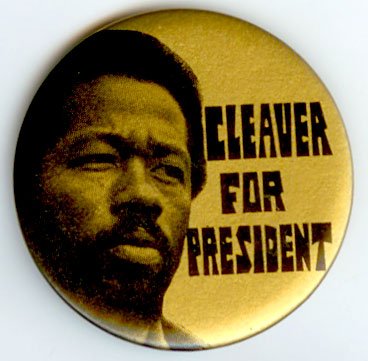 Looking cross-historically at Nader and Wallace, it’s tempting to conclude that 2.7% of the popular vote is just enough to get you reviled by the political establishment, possibly tarnishing your associates by proximity and requiring you (Wallace) or countless supporters (Nader) to vocalize mea culpas for years, to try to live down the audacity. If Schopenhauer’s maxim (“All truth passes through three stages. First, it is ridiculed. Second, it is violently opposed. Third, it is accepted as being self-evident.”) applies to third-party left politics, then 2.7% might be just enough to register violent opposition in the modern era. Of course in the Debs era, the Socialists got more than 2.7% five elections in a row.
Looking cross-historically at Nader and Wallace, it’s tempting to conclude that 2.7% of the popular vote is just enough to get you reviled by the political establishment, possibly tarnishing your associates by proximity and requiring you (Wallace) or countless supporters (Nader) to vocalize mea culpas for years, to try to live down the audacity. If Schopenhauer’s maxim (“All truth passes through three stages. First, it is ridiculed. Second, it is violently opposed. Third, it is accepted as being self-evident.”) applies to third-party left politics, then 2.7% might be just enough to register violent opposition in the modern era. Of course in the Debs era, the Socialists got more than 2.7% five elections in a row.
The Broad View
Why do some of us on the left bother running or supporting left-of-center presidential candidates every four years? Why do leftists whose views are far removed from the mainstream axis around which presidential elections turn bother to engage with presidential races at all, when local races offer possibilities for more immediate inroads?
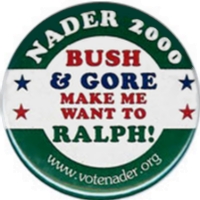 In heady years, like those of Nader’s 2000 run, a third-party presidential campaign seems like it could lay the groundwork for a permanent shakeup of the electoral system and provide a space for the expression, development, and broadening of radical politics. (Arguably, if Jesse Jackson’s Rainbow Coalition had left the Democratic Party in 1988, this would have provided an even better opportunity for such a development. But Jackson was nowhere near taking such a step, and independent forces within the Rainbow Coalition were not developed enough to challenge him.) In lean years, like 2004-2012, supporting a third-party presidential campaign is a good way to alienate your liberal and progressive friends (and bore your anarchist friends) seemingly without a lot in return.
In heady years, like those of Nader’s 2000 run, a third-party presidential campaign seems like it could lay the groundwork for a permanent shakeup of the electoral system and provide a space for the expression, development, and broadening of radical politics. (Arguably, if Jesse Jackson’s Rainbow Coalition had left the Democratic Party in 1988, this would have provided an even better opportunity for such a development. But Jackson was nowhere near taking such a step, and independent forces within the Rainbow Coalition were not developed enough to challenge him.) In lean years, like 2004-2012, supporting a third-party presidential campaign is a good way to alienate your liberal and progressive friends (and bore your anarchist friends) seemingly without a lot in return.
Yet, presidential politics occupy a large space within the terrain of the national-popular. Every four years, most other political discussions come to a halt or get derailed as this large symbolic prize takes center-stage. One may find it frustrating to see social movements dissipate in the face of a presidential election, but that they often do so is a fact. The failure of Occupy to experience a spring 2012 revival may have been partially conditioned by an already growing focus on the presidential race. Arguably a downturn in the Immigrant Rights Movement coincided with the 2008 cycle, though activism by undocumented youth has provided a partial revival, albeit without hundreds of thousands in the streets at once. The clearest example in recent memory is the 2004 cycle, when many liberals and progressives, led by groups like MoveOn, abandoned the antiwar movement and buried their energies in “Anybody But Bush” efforts which ultimately coincided with the Kerry campaign.
 Local and state races never take up this amount of space, and even midterm Congressional, Senate, and gubernatorial elections only take up a fraction of it. Fundamentally, I think this is why we do it: propagandistically, if the left wants to speak to people during these paroxysms that arrive like clockwork every four years, there’s nothing quite like an electoral intervention at the presidential level. It’s a space of political debate that is tantalizingly desirable and maddening: desirable to the extent that it offers a specter of debate over the direction of the country; maddening to the extent that the parameters of that debate are very carefully circumscribed. It provokes a certain kind of detailed, frenetic, yet politically captivated energy on the part of a great many politically engaged people, to the extent that people whose politics are way to the left of the candidates who have a chance of being elected begin to think like tacticians for one of these candidates. Platitudes abound on all sides for how an election is the bare minimum, not the end-point, of political engagement, yet the organizing we promise each other and the holding-accountable we promise towards the candidates tend to fall short. Shibboleths of immanent fascism and reaction rattle about, along with the hyperbolic inflation of the preciousness of each vote, to the point where the whole thing becomes a depressing and sometimes disgusting exercise. Of course that reaction is often a real threat, and disenfranchisement of poor voters and voters of color is all too real.
Local and state races never take up this amount of space, and even midterm Congressional, Senate, and gubernatorial elections only take up a fraction of it. Fundamentally, I think this is why we do it: propagandistically, if the left wants to speak to people during these paroxysms that arrive like clockwork every four years, there’s nothing quite like an electoral intervention at the presidential level. It’s a space of political debate that is tantalizingly desirable and maddening: desirable to the extent that it offers a specter of debate over the direction of the country; maddening to the extent that the parameters of that debate are very carefully circumscribed. It provokes a certain kind of detailed, frenetic, yet politically captivated energy on the part of a great many politically engaged people, to the extent that people whose politics are way to the left of the candidates who have a chance of being elected begin to think like tacticians for one of these candidates. Platitudes abound on all sides for how an election is the bare minimum, not the end-point, of political engagement, yet the organizing we promise each other and the holding-accountable we promise towards the candidates tend to fall short. Shibboleths of immanent fascism and reaction rattle about, along with the hyperbolic inflation of the preciousness of each vote, to the point where the whole thing becomes a depressing and sometimes disgusting exercise. Of course that reaction is often a real threat, and disenfranchisement of poor voters and voters of color is all too real.
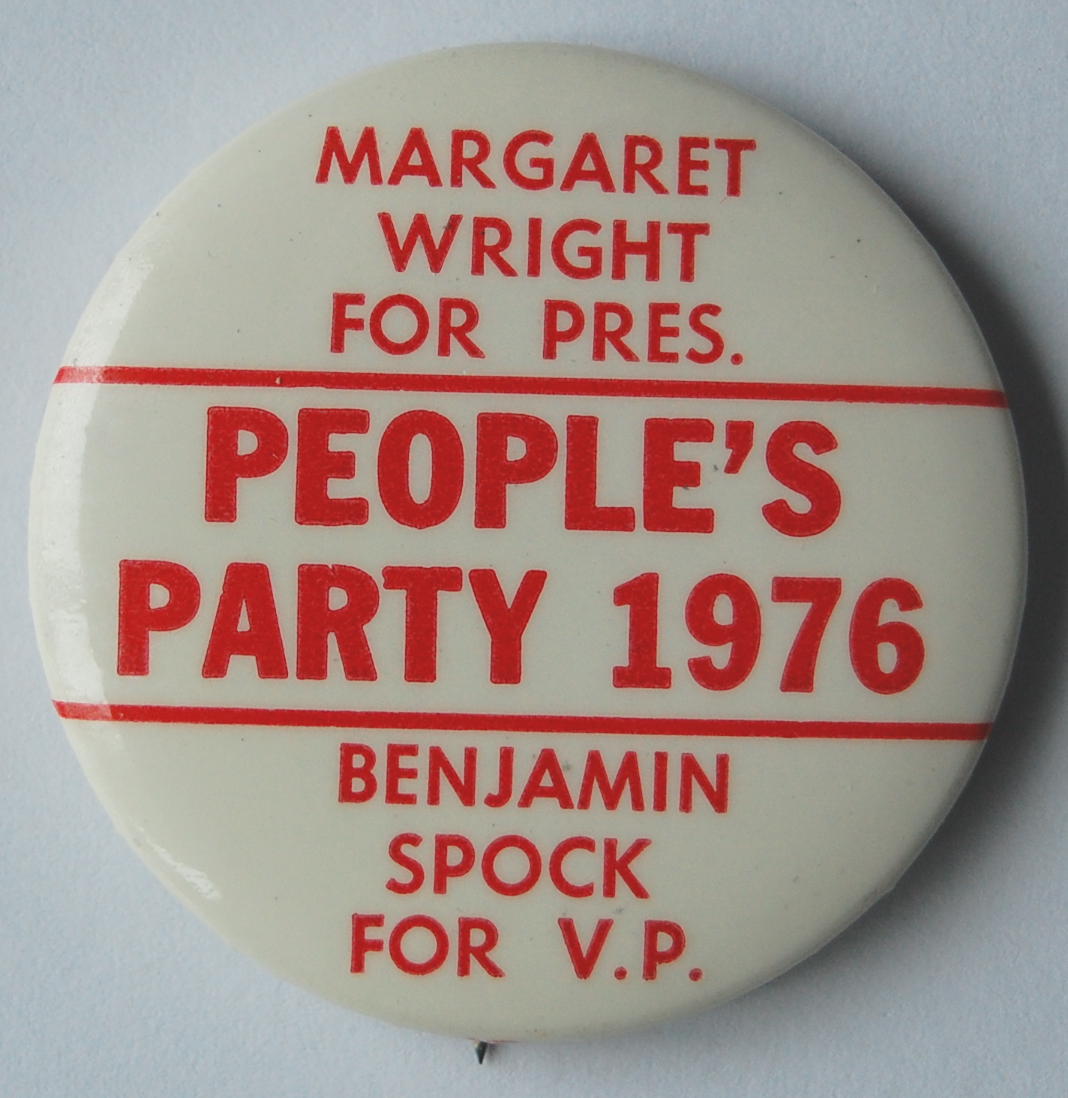 The 2012 election seems to have dealt a blow to reaction on several fronts, though Obama’s promised “Grand Bargain” suggests that the Democrats will continue their approximately 1970s-present tradition of triangulating away their political capital instead of using it to build a governing consensus. Nevertheless, suggestions that Republican reliance on a shrinking older, white male demographic might cause them to go the way of the Whigs are intriguing. Chances are better than not that they will figure out a way to rebrand themselves, and that as early as 2014 we’ll see a wave of Latino Republican standard-bearers, along with a few Black and Asian candidates and more and more women, articulating some modernized version of the GOP maybe along the lines of a more plebeian version of the pre-2001 George Bushes. Nevertheless both a Republican collapse and an increasing level of two-party “transformism” seem within the realm of possibility, at which point the left’s ability to articulate something could become more important.
The 2012 election seems to have dealt a blow to reaction on several fronts, though Obama’s promised “Grand Bargain” suggests that the Democrats will continue their approximately 1970s-present tradition of triangulating away their political capital instead of using it to build a governing consensus. Nevertheless, suggestions that Republican reliance on a shrinking older, white male demographic might cause them to go the way of the Whigs are intriguing. Chances are better than not that they will figure out a way to rebrand themselves, and that as early as 2014 we’ll see a wave of Latino Republican standard-bearers, along with a few Black and Asian candidates and more and more women, articulating some modernized version of the GOP maybe along the lines of a more plebeian version of the pre-2001 George Bushes. Nevertheless both a Republican collapse and an increasing level of two-party “transformism” seem within the realm of possibility, at which point the left’s ability to articulate something could become more important.
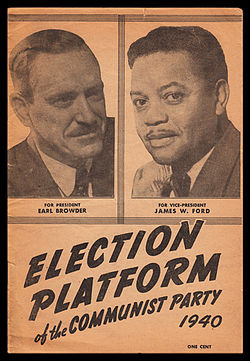 Such a transformation would probably not happen in one or two election cycles, though it’s impossible to predict idiosyncratic political personalities and ever sharpening economic crises. In my view, what we should be aiming for would be a series of results that would look like the Socialist Party’s from 1900-1920, possibly presaging a leap into major party status. This sounds like a modest task but it is in fact immense, since socialism from 1900-1920 was an idea that captivated a great deal of excitement, reflected however diffusely in these results. In those years the US labor movement was combative and experimental, led by the IWW; revolution was on the agenda around the world; socialism had a cultural milieu, building on the legacy of populism; and the world got embroiled in a terribly unpopular, grisly, draining world war. The left today is still mostly mired in a post-1989 inability to project the new world we insist is possible, as opposed to rejecting the neoliberal consensus and making pleas for a different kind of public space. Furthermore, even the better vehicles we have for the electoral aspect of such a project are in relative disarray.
Such a transformation would probably not happen in one or two election cycles, though it’s impossible to predict idiosyncratic political personalities and ever sharpening economic crises. In my view, what we should be aiming for would be a series of results that would look like the Socialist Party’s from 1900-1920, possibly presaging a leap into major party status. This sounds like a modest task but it is in fact immense, since socialism from 1900-1920 was an idea that captivated a great deal of excitement, reflected however diffusely in these results. In those years the US labor movement was combative and experimental, led by the IWW; revolution was on the agenda around the world; socialism had a cultural milieu, building on the legacy of populism; and the world got embroiled in a terribly unpopular, grisly, draining world war. The left today is still mostly mired in a post-1989 inability to project the new world we insist is possible, as opposed to rejecting the neoliberal consensus and making pleas for a different kind of public space. Furthermore, even the better vehicles we have for the electoral aspect of such a project are in relative disarray.
Third parties are largely secondary to a revival of some kind of democratic, worker-driven labor movement and either sustained mass movements or an intensification of episodic struggles, and presidential races are probably even more secondary in some ways to local campaigns that could be winnable short-term, building the base for a new historic bloc. They may only be important as a kind of superstructural barometer of how we’re doing, or they may provide a space for making propagandistic inroads.
A useful accompaniment to this piece would be a history of insurgent political expressions within the major parties, such as the Rainbow Coalition, the Mississippi Freedom Democratic Party, etc. I suspect that the establishment of a left historic bloc of this sort would not emerge solely from the organic growth of a left-of-center electoral bloc, but also from a split in which wings of one or both of the two major parties broke away. It seems most likely to imagine such a split from the Democrats, though it’s worth observing that before their consolidation into a reiteration of the conservative wing of the Republican Party, the Tea Party was a movement of disaffected, anti-bailout, largely white and non-urban / non-cosmopolitan social groups. Within the range of political possibilities currently articulated and the prevalence of reactionary racial politics in this milieu, it was perhaps inevitable that the Tea Party evolved in the direction it did, but if the legitimacy of capitalism continues to come into question, it’s possible to imagine similar formations evolving in a populist or even radical direction.
Check out Adam’s blog at overturning praxis.

Comments
11 responses to “A Review of Progressive Third Parties in U.S. Elections”
Thanks for sharing these thoughts. I found them quite interesting.
In response to Alan Maki’s remarks: this article was not intended to be a comprehensive review of left-of-center independent political action – just a review of vote results for presidential campaigns. Admittedly, that’s a very small slice of even election results (not taking into account local, state, or congressional races), and results in terms of number of votes is only one measure, probably not the most important one, of the impact of campaigns. I still think it’s an interesting one, because it makes it possible to get a view of the sweep of history. (Debs and the Populists scared the ruling class in a way that arguably no subsequent electoral effort has, in part because one can look at these kind of results and imagine a slightly different trajectory in which one of them could have grown into major party status, knocking out one of the existing major parties. The Communist Party scared the ruling class, but not because of their electoral efforts IMO, which were always a relatively small tip of the iceberg compared to their organizing efforts.)
I don’t by any means believe that we are too weak to accomplish anything in the electoral arena. On the contrary, while I think the Republican Party nationally is still fairly robust, there are several states in which it is arguably going the way of the Whigs, and some of these states could be ripe for building a major third party that would split the Democrats and pick up labor support. Arguably you could try the same strategy in some states where the Democrats are very weak, but in those states the left, such as it is, is likely to be small and weak.
A full exploration of forward-looking possibilities would be a different piece, however. In the immediate aftermath of the election, I thought it was useful to draw together some historical perspective. The optic I’ve taken here is certainly only one possible approach, and I think it would be interesting to take stock of some of these other historical precedents, for example, the different approaches taken in the 1890s, the early 1900s, and the 1930s and how extensive some of the challenges were in certain states and regions.
While Lemke was in many ways a progressive figure having been a leader of the small farmer Non-Partisan League in North Dakota, his 1936 campaign was on the ticket of the Union Party, two of whose principal leaders and spokespeople were Gerald L.K. Smith and the notorious Father Coughlin, who if they weren’t fascists at that point were moving rapidly into the iteration they are most remembered for. Smith’s Silver Shirts became a fascist thug outfit modeled on the German SA that would seek to break up labor and progressive meetings. In its early days the Socialist Workers Party did yeoman work in defending the progressive movement against this threat.
Nice Article! I had two responses. The first is from Anthony Noel of the New Progressive Alliance.
1) A big part of the trouble this nation is in lies in our nomenclature. “Left” is an obsolete and counterproductive term, IF we are ACTUALLY more interested in empowering the working class than we are in classifying/naming our beliefs so “we” can “win.” The author’s premise is therefore flawed, for me, from the outset. By continuing to see things as “left” and “right” we play into – rather than move beyond – the two-party trap that each of us and growing numbers of Americans recognize as the real enemy. The GOP figured out the value in creating these false divisions a long time ago. That’s why Reagan demonized the word “liberal.” Their logic went approximately like this: “If we can keep these morons [voters] arguing over big ideological ‘issues’ like abortion and guns and religion, we can be off doing whatever the hell we want to enrich ourselves.” And it worked.
2) The reason Fightin’ Bob’s and Debs’ and Wallace’s and Weaver’s and – yes – Roosevelt’s independent runs were effective is because they appealed to common values and addressed real concerns that effected people in their daily lives: charity, fairness, peace, and justice. No one will get any argument from me that Roosevelt’s run was largely self-serving, but that doesn’t change the fact that the themes on which he chose to stand resonated with voters, or that his – and the others’ – successes were, as Alan notes, more effective in winning real Progressive reforms than any “winning” candidate ever was – including that OTHER Roosevelt. It has always been, and will continue to be, the small but vocal PRESENCE of people who insist on charity, fairness, peace and justice that moves this country forward, and I believe very strongly that whether we are able to emulate Canada and increase the numbers of that presence to an eventual majority relies in VERY large part on whether we can leave behind obsolete, divisive terms like “left” and “right,” “Democrat” and “Republican” etc. These words prompt notions counterproductive to our interests, because voters have been carefully inculcated with those notions – and of course, with the “duty” to vote – since grade school.
The second response is from Alan Maki, a Minnesota labor leader.
The problem with this is that it doesn’t take into consideration some important factors:
First is severe repression. Debs was forced to run for president from a prison cell; but he still received around a million votes.
In 1936-1938 very severe repression began sweeping the country in the form of the Dies Committee.
Also not considered are some of the very successful local and state left wing campaigns.
Also not considered is the fact many of these campaigns were very significant well beyond their votes.
Also not considered is the failure of the left to push for united tickets bringing together liberals, progressives and the left like the NDP does so successfully in Canada.
Also not considered is the way congressional districts have been gerrymandered to dilute working class votes.
Also; these percentages tell us nothing about the areas where the left was very strong in bringing out these votes. While the percentages appear very small we don’t find out that in areas where the left was strong locally these are the areas where the left national tickets got very powerful votes.
For instance; just this past weekend I attended a presentation about the Socialist who was elected to the Kalamazoo, Michigan City Council at the Kalamazoo Museum. Debs campaigned with the Socialist Party candidate and while Debs’ vote total may not have been completely impressive— although it wasn’t too shabby— the socialist candidate Debs campaigned for won a city council seat.
Check out the attachment from the headline in the Kalamazoo paper at the time.
I have seen photos of William Z. Foster while running for president drawing crowds of 5,000 people in places like Grand Rapids, Michigan while only getting a few hundred votes. But, what people heard him say had to have counted for something… in fact, during that election the Communist Party actually elected a judge in Grand Rapids… so, what did it mean that Foster only received a minuscule percentage of the votes in Grand Rapids?
in Minnesota, it was actually very difficult for anyone who wasn’t a socialist or Communist to get elected to any office from 1932 to 1938 even though the left wing candidates for president did very poorly in Minnesota during these times but in heavy working class areas both Foster and Browder when they ran got more votes that the Democrats or Republicans.
This is not to say we shouldn’t look at the small percentages but we need to understand there is another part to this story not being told nor examined.
We have the basis for busting out of this two-party trap but the candidates have had some very narrow visions that are kind of— in my opinion— selfish in that they refused to bring forward a united slate; and people recognize this and it makes people not want to get involved. Both Rocky Anderson and Jill Stein were very selfish in this campaign by not running together.
Another thing the percentages in the article do not consider is the large numbers of parties on the ballot at that time.
Debs, especially, scared the ruling class. Had he not been in prison he might have actually been a contender for popular votes but he never could have got the electoral votes because of the historic gerrymandering. I doubt any left candidate could get the needed electoral votes— even McGovern running as a Democrat never had a chance to get the required electoral votes even if he would have got more of the popular votes by a large majority.
But, keep in mind; we are trying to do more than get people elected. We are challenging Wall Street for political and economic power which can be won without ever electing a president— but, having strong candidates running for president will most likely be a requirement because such campaigns serve to bring our movements together.
in my opinion this article serves the purpose of trying to convince us we are too weak to accomplish anything in the political arena and that is just plain wrong.
Alan